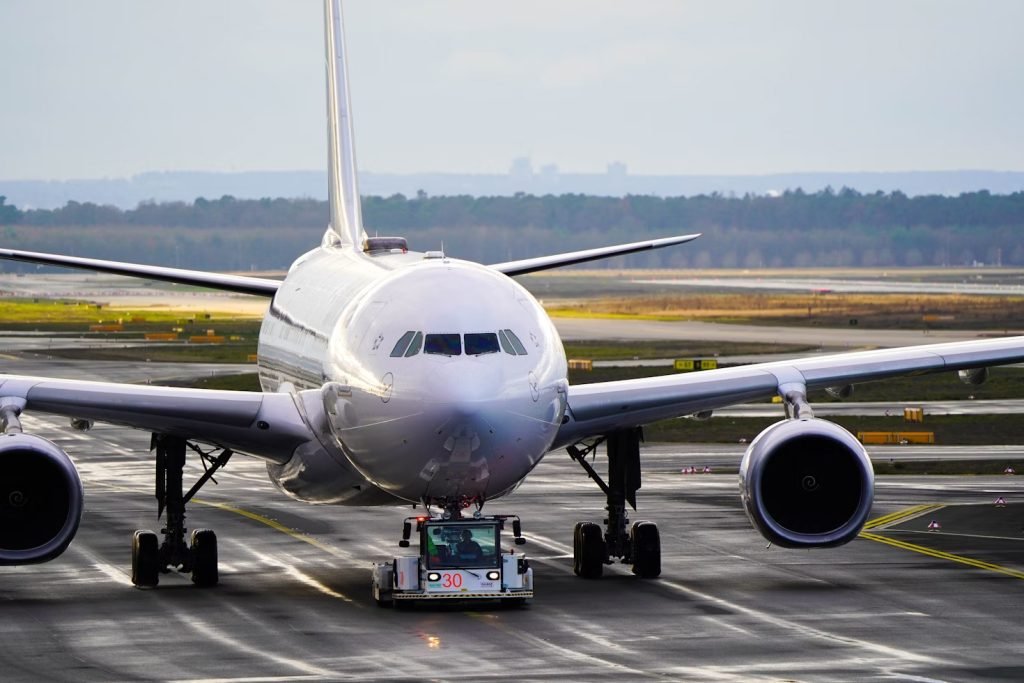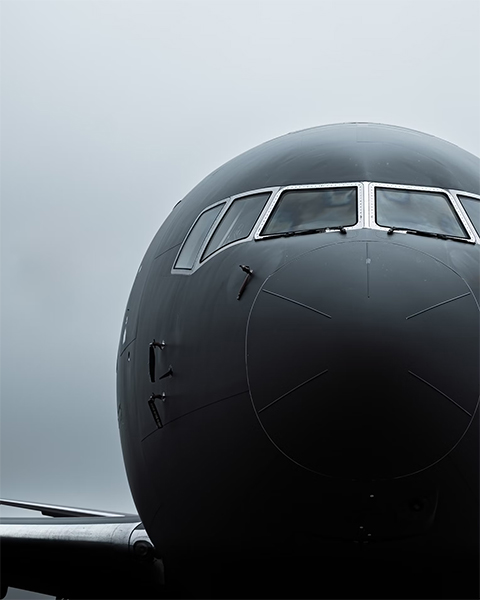Aircraft
At Gen Fams, we understand the importance of knowledge and expertise in the aviation field. That’s why we offer specialized General Familiarization courses for Boeing and Airbus aircraft. Our courses provide comprehensive insights into these aircraft types’ technical aspects, systems, and operational features.
Airbus - Aircraft Types

Airbus A320
The Airbus A320 is a narrow-body, single-aisle, short- to medium-range commercial aircraft designed and produced by Airbus. It first entered service in 1988 and has since become one of the world’s most successful and widely used aircraft. Key features include:
Capacity: The A320 typically seats around 140 to 240 passengers, depending on the specific variant and configuration.
Innovation: The A320 was one of the pioneers in introducing a fully digital fly-by-wire control system in commercial aviation, enhancing safety and efficiency.
Versatility: The A320 family includes various models, such as the A318, A319, A320, and A321, catering to different seating capacities and range requirements.
Fuel Efficiency: The A320 incorporates advanced aerodynamics and fuel-efficient engines, contributing to its popularity among airlines.
Airbus A330
The Airbus A330 is a wide-body, twin-engine, long-range commercial aircraft produced by Airbus. It first entered service in the early 1990s and has become a popular choice for passenger and cargo operations. Key features include:
Capacity: The A330 accommodates around 250 to 440 passengers, depending on the specific variant and seating configuration.
Range: It has a range of approximately 5,600 to 13,400 kilometers, making it suitable for various long-haul routes.
Versatility: The A330 has been produced in different variants, including the A330-200 and A330-300, catering to the specific needs of airlines for different range and capacity requirements.
Cargo Operations: The A330 has a freighter variant, the A330-200F, designed for efficient cargo transportation.


Boeing 747-400
The Boeing 747-400, a high-capacity, long-range aircraft, marked the third generation of the iconic 747 series, succeeding the 747-200 model. This aviation marvel became a preferred choice for global airlines, embodying significant advancements in air travel. Key features include:
Capacity: Typically accommodating 416 passengers in a three-class configuration, the 747-400 provided a spacious and comfortable flying experience.
Range: With an impressive range of approximately 7,670 nautical miles (14,200 km), it excelled in covering vast distances.
Wingspan: Boasting a wingspan of about 64 meters (211 feet, 5 inches), the 747-400 exhibited remarkable aerodynamic design.
Cockpit: Equipped with a modern cockpit featuring advanced avionics, the 747-400 ensured improved navigation and communication for flight crews.
Legacy: The 747-400 played a pivotal role in aviation history, revolutionizing long-haul air travel. Its distinctive hump, coupled with its large capacity and extended range, solidified its status as an iconic aircraft. However, evolving preferences for twin-engine models with comparable range capabilities have led to a gradual decline in its presence within airline fleets.
Boeing 747-800
Introduced in 2012, the Boeing 747-8 is the latest and largest variant in the revered 747 series, encompassing the 747-8 Intercontinental for passengers and the 747-8 Freighter for cargo operations. Key features include:
Size: As the world’s longest passenger aircraft at approximately 76.3 meters (250 feet, 2 inches), the 747-8 sets new standards in size and grandeur.
Capacity: Hosting around 467 passengers in a three-class configuration, the 747-8 Intercontinental offers unparalleled luxury and comfort.
Performance: Enhanced by advanced engines like the General Electric GEnx-2B67, the 747-8 boasts improved fuel efficiency and a remarkable range of 7,730 nautical miles (14,320 km).
Wings and Aerodynamics: Featuring innovative wing designs with raked wingtips, the 747-8 achieves heightened fuel efficiency.
Versatility: The 747-8 Freighter, a dedicated cargo variant, has gained popularity among cargo operators for its expansive capacity and efficient cargo transport capabilities.


Boeing 767
Introduced in the early 1980s, the Boeing 767 has stood the test of time as a twin-engine, medium-to-long-range commercial airplane serving both passenger and cargo operations. Key features include:
Capacity: Accommodating 181 to 245 passengers based on the model and seating configuration, the 767 offers versatility in passenger transport.
Variants: The aircraft caters to diverse airline requirements with models like the 767-200, 767 300, 767-300ER, and the more recent 767-400ER.
Range: Boasting a range of 3,850 to 6,385 nautical miles (7,130 to 11,825 km), the 767 covers a spectrum of short and long-haul routes.
Cargo Operations: Adapted for cargo use, the 767 Freighter provides an efficient transport platform.
Enduring Success: The Boeing 767 has maintained its success over the years, serving as a reliable and versatile aircraft for airlines operating in various markets.
Boeing 737
The Boeing 737, a narrow-body, twin-engine aircraft, has etched its place in aviation history as one of the best-selling commercial jetliners, dominating short to medium-range travel. Key Features include:
Capacity: Varying across numerous variants, the 737 seats from around 85 to over 200 passengers, offering flexibility for airlines.
Versatility: Produced in multiple generations, including the Classic, Next-Generation (NG), and the recent 737 MAX series, the 737 caters to diverse operational needs.
Fuel Efficiency: The 737 MAX series, introduced in the 2010s, incorporates advanced aerodynamics and fuel-efficient engines for enhanced performance.
Market Presence: Globally utilized for short-haul and regional routes, the Boeing 737 has been a stalwart in the aviation industry for decades.

Enhance Your Knowledge.
Broaden your expertise through our comprehensive courses. Add depth to your knowledge, nurture curiosity, and embark on a continuous journey of learning.
Experience professional growth, one course at a time.
Discover Individual and All courses
$875.00
Boeing Package Contains 717 Gen Fam, 737 Gen Fam, 737 Max Gen Fam, 747-400 Gen Fam, 747-800 Gen Fam, 757 Gen Fam, 767 Gen Fam, 777 Gen Fam.
$1,200.00
The All In One Course Package contains both Airbus Package & Boeing Package.


